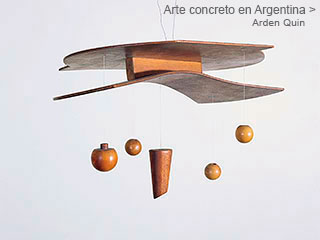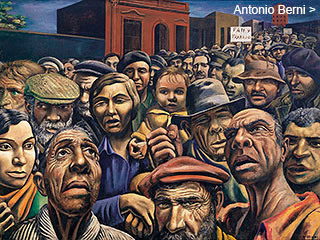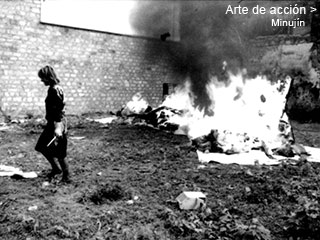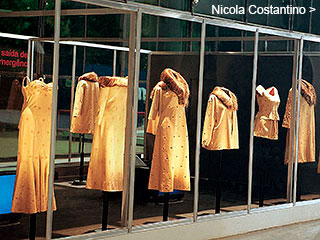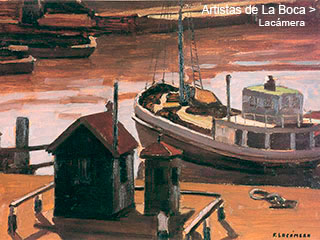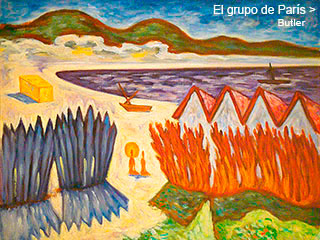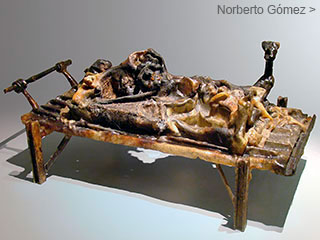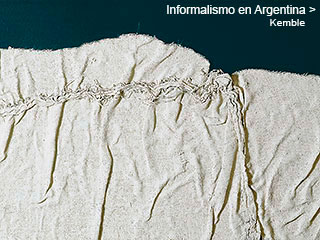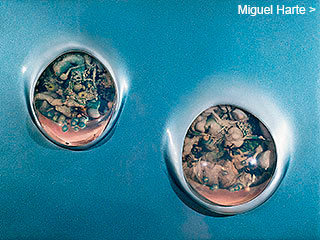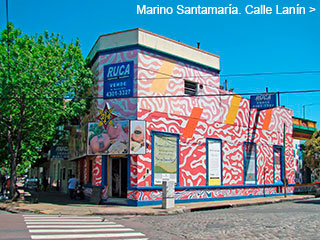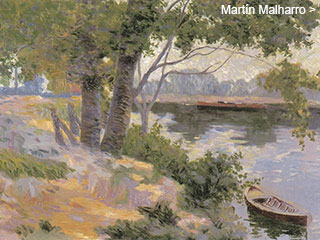Menú
Algunos dossiers
Concrete Art
in Argentina
in Argentina
by
Adriana Lauria
January 2003
January 2003
Abstraction asserted itself in Argentina through the achievements of groups such as Arte Concreto-Invención, Madí and Perceptismo, which developed their activity since the second half of the 1940s. These groups constituted the first organized national avant-garde and made their aesthetics known to the public through exhibitions, magazines, manifestoes, leaflets, lectures, etc.
Documents
Rhod Rothfuss
Rhod Rothfuss. “A propósito del marco” (Apropos of the frame), in Madí magazine, Buenos Aires, October 1950,
No. 4.
No. 4.
On abolishing the naturalist representation in their subjects, Cubism set forth the review of the concept that led the painters of every time to enclose the picture within a regular frame, a “window” from which, apparently, we see the world. In 1941, I attempted to work out this problem that Cubism had not solved (in spite of Marcoussis’ experiences). Two facets outlined the case: whether there should be an immediate relation between the thematic structure and the contour, or whether, on the contrary, the immediate relation between subject and contour should be continued, through “backgrounds”; for while backgrounds are indispensable to create the illusion of space in naturalist painting, they always are elements that create an interruption in a composition; namely, elements that provide a fragment of the subject, never the whole of it; there appeared from this that painting, on leaving representation to dedicate to the creation of entities, should be solved as a whole unit, by no means fragmented. The solution was to trim the frame, which seemed to entirely meet this concept, for it creates a continual composition.
I explained these initial experiences at the Ateneo de Montevideo in 1943, and these explorations were supposedly recorded in the issue number one of “ARTURO” magazine, in the year 1944.
When the group “ARTE CONCRETO INVENCIÓN” develops, these experiences come to form the body of the group’s doctrine. Later, the group splits because of the exclusion of some of its members, who will keep using the same denomination, while the movement’s central nucleus adopts the name “MADÍ”.
From Madí on, this evolving process continues to progress and two kinds of paintings are analyzed and explained according to their construction, while they are also identified depending on their frames; they are paintings with a trimmed frame and paintings with a structured frame; in the sense that in the case of the trimmed frame, an inwards process has been followed, that is, a polygon has been divided (fractionized manner) or it simply has been trimmed according to a fractionized regular polygon; here, the resulting shape always remembers the shape it came from, for if one continues the basic lines of the former, the regular polygon in which it was conceived can be recreated. In the case of the structured frame, there is an inverse procedure, that is, outwards; the polygons have been composed starting from one or more centers (compound shapes).
Consequently, in trimmed frames painting, being the frame, in almost every case, the sole shape consciously created, it acquires an essential significance at the expense of the paintings composition, which reduces to a series of boxes obtained through drawing lines between points of the perimeter, therefore lacking a plastic subject, or, when it has one, it is then necessary to appeal to filling forms (backgrounds) in order to cover the spaces laying between the subject properly said and the frame. In structured frames, painting the frame is a final outcome of a development process and composition of a strict plastic subject, not needing in any case elements external to it for its normal structuring.
Here are the reasons that originated the rise of the new concepts, which, sustained upon dialectic and scientific reasons, support these theories, against the old methods, giving place to the rise of infinite prospects for the future of painting.


